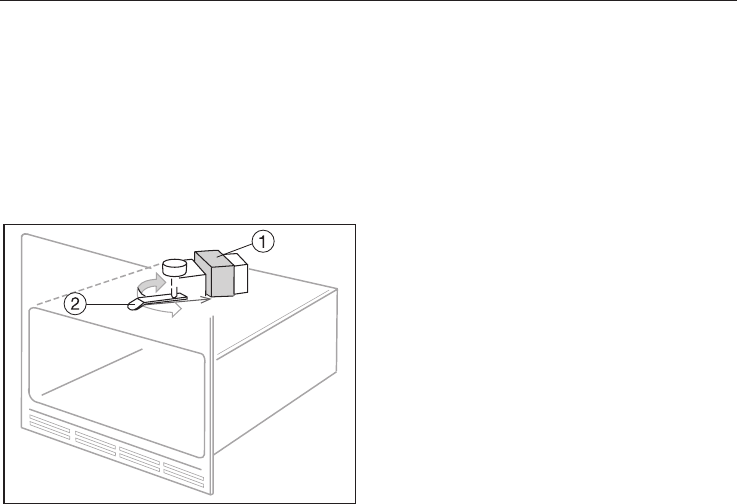
Microwave h
Microwave cooking offers the benefits
of speed, convenience and nutritional
advantages when food does not require
browning or crisping.
Functional description
This oven is equipped with a magne-
tron a, which converts electrical en-
ergy into microwaves.
A stirrer fan b above the oven ceiling
distributes the microwaves evenly
throughout the oven interior, rebound
-
ing them off the walls so that they reach
and enter the food from all sides.
In order for microwaves to reach the
food, they must be able to penetrate
the cooking utensil being used.
Microwaves can penetrate porcelain,
glass, cardboard and plastics but not
metal. Do not, therefore, use utensils
made of metal, or which contain metal,
for example in the form of gold or silver
trim. The metal reflects the microwaves
and this could lead to the creation of
sparks. The microwaves cannot be ab
-
sorbed.
All food contains moisture molecules
which, when subjected to microwave
energy, start to oscillate 2.5 thousand
million times a second. The friction
caused by this vibration creates heat,
which first starts developing around the
outside of the food and then slowly
penetrates towards the centre. The
moisture, fat and sugar content of food
will affect the speed at which it is
cooked.
As heat is produced directly in the
food,
–
food can generally be cooked with
-
out adding much liquid or cooking oil
– cooking, reheating and defrosting in
a microwave oven is quicker than us-
ing traditional oven methods
– nutrients, such as vitamins and min-
erals, are generally retained
– colour, texture and taste of food are
not impaired
–
the surface temperature stays cool
enough to avoid browning.
Operating modes
13


















